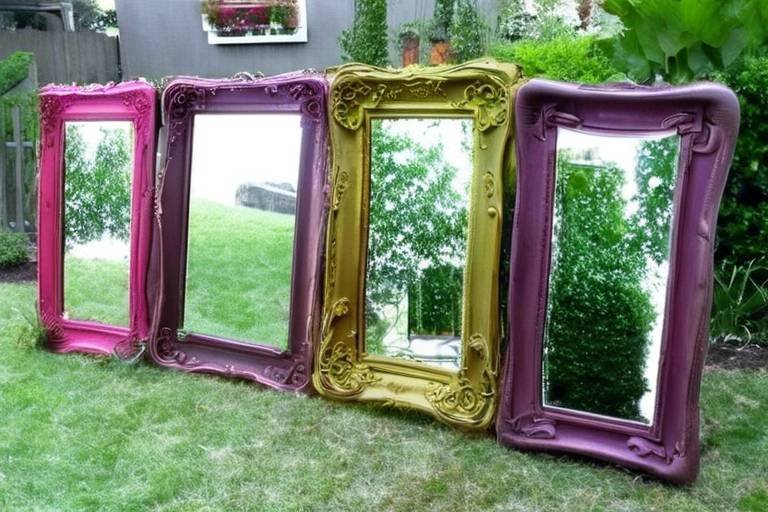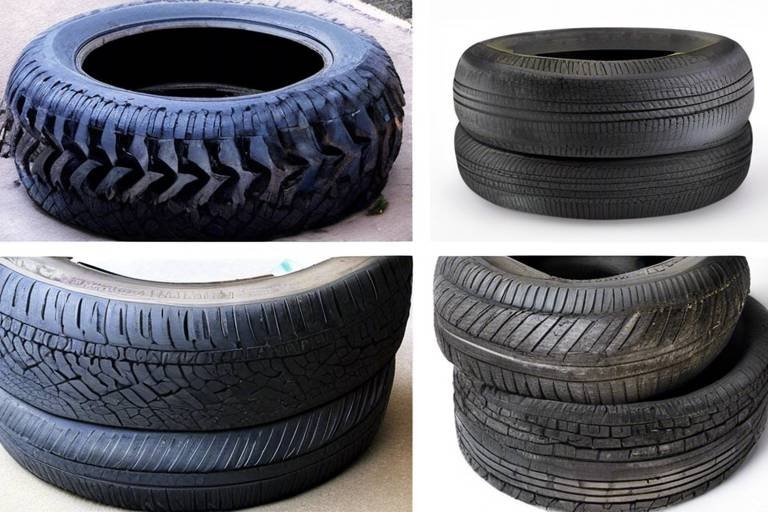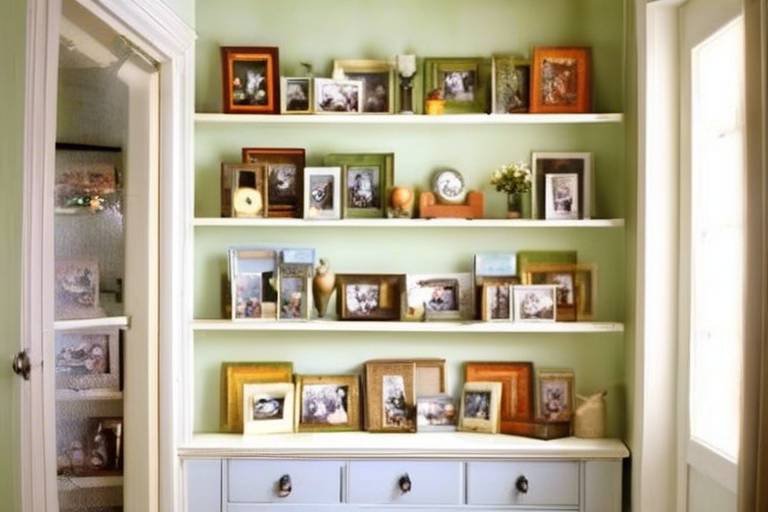Finding Beauty in the Old: The Art of Repurposing
In a world that seems to be racing towards the future at breakneck speed, it's easy to overlook the treasures that lie in the past. Repurposing old items isn't just a trend; it's a movement that celebrates creativity, sustainability, and the beauty of history. Imagine walking into a room filled with unique decor, each piece telling its own story. From vintage furniture to discarded materials, the art of repurposing allows us to breathe new life into what was once considered waste. This article explores the creative process of repurposing old items, highlighting its environmental benefits, artistic expressions, and practical applications in modern design, all while encouraging you to embrace sustainability and creativity.
Repurposing old items significantly reduces waste and conserves resources. By transforming discarded materials, we contribute to a healthier planet. Think about it: every time you give a new purpose to an old item, you're not just saving it from the landfill; you're also reducing the demand for new products, which often come with a hefty environmental price tag. This practice promotes sustainable living, encouraging us to rethink our consumption habits. Instead of viewing old items as trash, we can see them as opportunities for creativity and innovation. The environmental impact of repurposing is profound, and it’s a small change that can lead to big results. It’s like planting a seed; you may not see the tree right away, but with time and care, it can grow into something magnificent.
There are countless innovative methods for repurposing, from DIY projects to artistic transformations. Each technique allows us to tap into our creative sides and showcase our personality through our decor. Whether you're an experienced crafter or a curious beginner, there's something for everyone in the world of repurposing. Here are a few popular techniques:
- Furniture Restoration: This not only preserves history but also offers unique design opportunities.
- Upcycling Household Items: Everyday items can be transformed into functional decor solutions.
- Artistic Transformations: Old materials can become stunning works of art that inspire and provoke thought.
Restoring old furniture is like unearthing a hidden gem. It allows you to preserve a piece of history while giving it a new lease on life. Techniques for refurbishing include sanding, staining, and applying new finishes that can transform a worn-out chair into a stunning centerpiece for your living room. Think of it as giving an old friend a makeover—you're not changing who they are; you're just enhancing their natural beauty. Plus, each restored piece carries a story, making your home feel more personal and inviting.
Applying new paint or finishes can dramatically alter the appearance of old furniture. The right color can evoke feelings of warmth, tranquility, or excitement. When selecting a color, consider the mood you want to create in your space. Finishing techniques such as distressing or glazing can add character and depth, making your furniture look like a carefully curated vintage find. It's like dressing up for an occasion; you want to choose something that reflects your style while also making a statement.
Reupholstering old chairs and sofas can revitalize their appearance and transform them into stylish statement pieces. With a plethora of fabric choices available, the possibilities are endless. From bold patterns to soft textures, the right fabric can breathe new life into a tired piece. Just imagine an old, faded armchair transformed into a vibrant, eye-catching focal point in your living room. It’s not just about aesthetics; it’s about creating a space that feels uniquely yours.
Upcycling everyday household items can lead to creative and functional decor solutions that add charm to any home. For instance, old glass jars can become beautiful vases, and wooden pallets can be transformed into rustic coffee tables. The beauty of upcycling is that it encourages us to look at our surroundings with fresh eyes. Instead of discarding something, we can ask ourselves, “How can I make this new again?” This mindset not only fosters creativity but also promotes a sense of resourcefulness that can be incredibly rewarding.
Artists and crafters around the world have successfully transformed old materials into stunning works of art. These remarkable examples showcase their ingenuity and the stories behind their creations. From sculptures made of scrap metal to intricate mosaics crafted from broken tiles, the possibilities are endless. Each piece tells a story of transformation and creativity, reminding us that beauty can be found in the most unexpected places.
Community-driven repurposing projects foster collaboration and creativity. When neighborhoods come together to create beautiful spaces, the results can be magical. These initiatives not only beautify the environment but also strengthen community bonds. Imagine a once-neglected park transformed into a vibrant gathering space filled with art installations made from repurposed materials. It’s a testament to what can be achieved when we work together towards a common goal.
Personal narratives of individuals who have embraced repurposing highlight the emotional connection to their creations. These inspiring journeys often reveal how repurposing has impacted their lives, providing a sense of purpose and fulfillment. Whether it’s a grandmother passing down her crafting skills or a young artist finding their voice through upcycling, these stories remind us that the art of repurposing is about more than just objects; it’s about the connections we forge and the memories we create.
Q: What are some easy items to start repurposing?
A: Common items include glass jars, old furniture, and fabric scraps. Start with something simple that inspires you!
Q: How do I find inspiration for my repurposing projects?
A: Inspiration can come from anywhere! Browse social media platforms like Pinterest, visit local thrift stores, or join community craft groups.
Q: Is repurposing expensive?
A: Not at all! Many repurposing projects can be done on a budget, especially if you use items you already have at home.
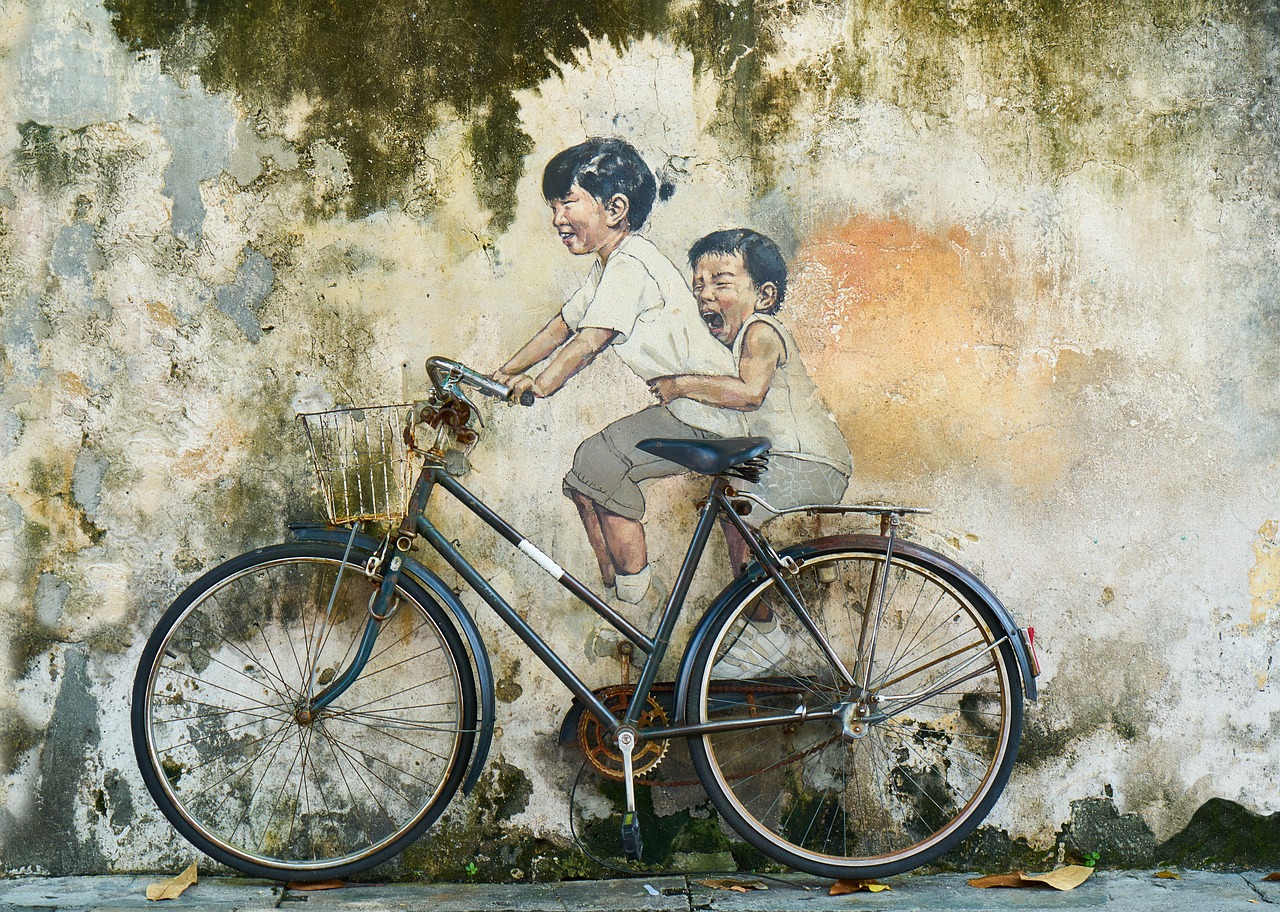
The Environmental Impact of Repurposing
In today's fast-paced world, where consumerism often leads to a throwaway culture, the act of repurposing old items stands out as a beacon of hope for our environment. By taking what is considered waste and transforming it into something new and useful, we not only reduce the amount of trash that ends up in landfills but also conserve precious resources. Imagine walking through a landfill, where mountains of discarded items sit for years, leaching harmful chemicals into the soil. Now, picture those same items being given a second chance at life; that’s the magic of repurposing!
When we repurpose, we engage in a cycle that benefits our planet in several ways. Firstly, it cuts down on the need for new materials. For example, the process of manufacturing new products often involves extracting raw materials, which in turn leads to habitat destruction, energy consumption, and pollution. By repurposing, we can significantly minimize these impacts. Here’s a quick breakdown of the environmental benefits:
| Environmental Benefit | Description |
|---|---|
| Waste Reduction | Less waste in landfills means a healthier ecosystem. |
| Resource Conservation | Reduces the need for new materials, thus saving natural resources. |
| Energy Savings | Less energy is consumed in creating new products. |
| Pollution Reduction | Decreases pollution from manufacturing and disposal processes. |
Moreover, repurposing encourages a more sustainable lifestyle. It challenges us to think creatively about how we use the items we already own. Instead of tossing out an old piece of furniture or a broken gadget, we can ask ourselves, "How can I turn this into something useful?" This mindset shift not only fosters creativity but also promotes a sense of responsibility towards our planet.
Furthermore, the environmental impact of repurposing isn't just limited to individual actions. When communities come together to embrace this practice, the effects can be monumental. Community workshops focusing on repurposing can educate individuals about sustainability while also building strong social bonds. Imagine a neighborhood where people share their skills, teach each other how to transform old items, and collectively reduce waste. This not only cultivates a culture of sustainability but also enhances community spirit.
In conclusion, the environmental impact of repurposing old items is profound. It’s an act of love for our planet that allows us to creatively engage with our possessions while making a significant difference in reducing waste, conserving resources, and promoting sustainability. So the next time you’re about to throw something away, pause and consider: could this item have a second life? Your creativity could be the key to a healthier planet!
- What is repurposing? Repurposing is the process of taking an item that is no longer useful in its current form and transforming it into something new and functional.
- How does repurposing benefit the environment? It reduces waste, conserves resources, saves energy, and decreases pollution.
- Can anyone repurpose items? Absolutely! Repurposing can be done by anyone with a bit of creativity and willingness to experiment.
- What are some common items that can be repurposed? Furniture, glass jars, old clothing, and pallets are just a few examples of items that can be repurposed.

Creative Techniques for Repurposing
When it comes to repurposing, the sky's the limit! It's all about unleashing your creativity and seeing potential where others see junk. Whether you're a DIY enthusiast or just looking to spruce up your living space, there are countless innovative techniques to breathe new life into old items. Have you ever thought about turning an old ladder into a bookshelf? Or how about transforming wine bottles into chic candle holders? The beauty of repurposing lies in the endless possibilities that await you!
One of the most popular methods of repurposing is through furniture restoration. This not only preserves the history of the piece but also allows you to create unique designs that reflect your personal style. Imagine an old, worn-out chair that’s been sitting in your garage. With a little love and creativity, it can become the centerpiece of your living room! Techniques like painting and reupholstering can dramatically change the look of your furniture. For instance, a fresh coat of paint can turn a dull, outdated side table into a vibrant statement piece that catches the eye.
Restoring furniture is an art form that combines skill and imagination. Imagine taking a vintage dresser and giving it a modern twist. You can achieve this by using bold colors or unique finishes. For those who love a rustic look, distressing techniques can add character and charm to any piece. Not to mention, the satisfaction of rescuing a piece of history from the landfill is incredibly rewarding!
When it comes to painting, choosing the right color can set the mood for your entire space. Soft pastels can create a calming atmosphere, while vibrant hues can inject energy into a room. Additionally, finishing techniques like glazing or waxing can add depth and texture, giving your furniture a professional touch. Don't forget to consider the environmental impact of your materials—using eco-friendly paints can make your project even more sustainable!
Reupholstering is another fantastic way to revitalize old furniture. Think about it: that tired old sofa could be transformed into a stylish focal point with the right fabric! You can choose from a variety of materials, from luxurious velvet to durable canvas, depending on your style and needs. Plus, reupholstering allows you to customize the look of your furniture to match your decor perfectly. The process may seem daunting, but with a little research and practice, you can create stunning results that will impress your guests.
Upcycling is not just limited to furniture; you can get creative with household items too! For instance, old glass jars can be transformed into beautiful vases or storage solutions, while tin cans can become charming planters. The key is to look at items with a fresh perspective. What seems like trash to one person can be a treasure in the hands of a creative mind. Here are a few quick ideas:
- Old T-Shirts: Turn them into reusable shopping bags.
- Wine Corks: Create a bulletin board or coasters.
- Wood Pallets: Use them to build outdoor furniture or garden planters.
Embracing the art of repurposing not only adds character to your home but also promotes a more sustainable lifestyle. So next time you’re about to toss something out, take a moment to think about how you might repurpose it. You might just surprise yourself with what you can create!
Q: What is repurposing?
A: Repurposing involves taking old or unused items and transforming them into something new and functional, rather than discarding them.
Q: How can I start repurposing items in my home?
A: Begin by assessing items you no longer use. Think creatively about how they can be transformed or combined with other materials to create something unique.
Q: Are there any specific tools I need for repurposing?
A: Basic tools like paintbrushes, sandpaper, a staple gun, and a sewing machine can be very helpful, but the most important tool is your imagination!
Q: Can I repurpose items without prior DIY experience?
A: Absolutely! There are plenty of beginner-friendly projects available online. Just start small and gradually take on more complex tasks as you gain confidence.

Furniture Restoration
Restoring old furniture is like giving a second chance to a beloved friend. It’s not just about fixing something that’s broken; it’s about preserving history and breathing new life into pieces that have stories to tell. Imagine sitting on a chair that has been part of countless family gatherings or using a table that once hosted holiday feasts. These pieces hold memories, and through restoration, we can keep those memories alive while adding our personal touch.
One of the most exciting aspects of furniture restoration is the unique design opportunities it presents. Each piece has its own character, and with a little creativity, you can transform it into a stunning work of art that enhances your living space. Whether it’s a vintage dresser or a worn-out sofa, the possibilities are endless. You can opt for traditional restoration methods or take a more modern approach, incorporating bold colors and contemporary finishes.
To get started, it’s essential to assess the condition of the furniture. Look for structural issues, such as loose joints or broken legs, and consider whether the piece needs a complete overhaul or just a few touch-ups. Here are some popular techniques you might consider:
- Refinishing: Stripping off the old finish and applying a new one can dramatically change the appearance of the furniture. A fresh coat of varnish or stain can highlight the natural beauty of the wood.
- Repainting: Sometimes, all it takes is a splash of color to make an old piece feel new again. Choose a color that complements your decor and don’t be afraid to experiment with different finishes, like matte or glossy.
- Reupholstering: If the fabric is worn or outdated, reupholstering can give your furniture a modern twist. Select fabrics that not only fit your style but also withstand the test of time.
Let’s not forget the importance of choosing the right materials for your restoration project. Quality paint, varnish, and upholstery can make all the difference in achieving a professional finish. It’s worth investing in good supplies since they will not only enhance the aesthetics but also ensure the longevity of your restored furniture.
Moreover, furniture restoration can be a rewarding DIY project. It allows you to unleash your creativity and develop new skills. As you sand, paint, and reassemble, you’ll find a sense of accomplishment in transforming something that was once overlooked into a cherished piece of art. Plus, the satisfaction of knowing you saved a piece from the landfill is truly gratifying.
In conclusion, furniture restoration is more than just a trend; it’s a commitment to sustainability and creativity. By choosing to restore rather than replace, you’re making a statement about valuing the past while embracing the future. So, roll up your sleeves, grab your tools, and let your imagination run wild. Your home deserves furniture that tells a story, and with restoration, you can be the author of that narrative.
Q: What tools do I need for furniture restoration?
A: Basic tools include sandpaper, a paintbrush, a staple gun, and a screwdriver. Depending on your project, you might also need a sander, a paint sprayer, or upholstery tools.
Q: How do I choose the right paint or finish?
A: Consider the type of wood and its condition. For a natural look, opt for stains; for a bold change, go for paint. Always test on a small area first!
Q: Can I restore furniture without prior experience?
A: Absolutely! Many restoration projects can be tackled by beginners. Start with something simple, follow tutorials, and don’t hesitate to ask for help!

Painting and Finishing
When it comes to breathing new life into old furniture, are two of the most transformative techniques you can employ. Imagine an outdated, scratched-up dresser being transformed into a vibrant centerpiece of your room, all thanks to a fresh coat of paint! But before you roll up your sleeves and dive into your next project, it’s essential to understand the nuances of color selection and finishing techniques that can help you achieve that perfect modern look while still honoring the piece's original character.
First off, let’s talk about color selection. Choosing the right color can make or break your project. Are you going for a bold statement or a subtle touch? For instance, a bright yellow can infuse energy into a dull space, while soft pastels can create a calming atmosphere. Think about the mood you want to evoke in your room. You might even want to consider the existing color palette of your home. If your living space is filled with earthy tones, a rich forest green or deep navy might create a stunning contrast. On the flip side, if you have a lot of colorful decor, neutral shades can help balance everything out.
Once you've decided on a color, it’s time to consider the finishing techniques. The finish you choose can significantly affect the overall aesthetic of your furniture. Here are some popular options to consider:
- Matte Finish: This gives a soft, sophisticated look but can be less durable.
- Satin Finish: A happy medium that offers a slight sheen while being easy to clean.
- Glossy Finish: Perfect for making colors pop, but it can show imperfections more easily.
After selecting your color and finish, preparation is key. Start by cleaning the surface thoroughly to remove any dirt or grease. Sanding down the furniture is also crucial; it not only helps the paint adhere better but also allows you to smooth out any imperfections. Once prepped, apply a primer if you’re working with a surface that might bleed through, like mahogany or cherry wood. Then, grab your paintbrush or roller, and get to work! Remember, multiple thin coats are better than one thick coat; this helps prevent drips and ensures a smooth finish.
Finally, don’t forget about sealing your masterpiece. A clear coat can protect your newly painted furniture from scratches and stains, ensuring its beauty lasts for years to come. Whether you choose a matte, satin, or glossy sealant, this final step is crucial for durability. So go ahead, unleash your creativity! With the right paint and finishing techniques, you can turn any old piece of furniture into a stunning work of art that reflects your personal style.
Q: What type of paint should I use for furniture?
A: It’s best to use furniture paint or chalk paint, as they are designed specifically for durability and adhesion on surfaces that experience wear and tear.
Q: Do I need to sand the furniture before painting?
A: Yes, sanding is recommended to create a smooth surface and help the paint adhere better.
Q: How long does it take for paint to dry?
A: Drying time can vary based on the type of paint used, but generally, it can take anywhere from 1 to 6 hours for the paint to dry to the touch. Always refer to the paint manufacturer's instructions for the most accurate information.
Q: Can I paint over stained furniture?
A: Yes, but it’s advisable to use a primer first to prevent any stains from bleeding through the new paint.
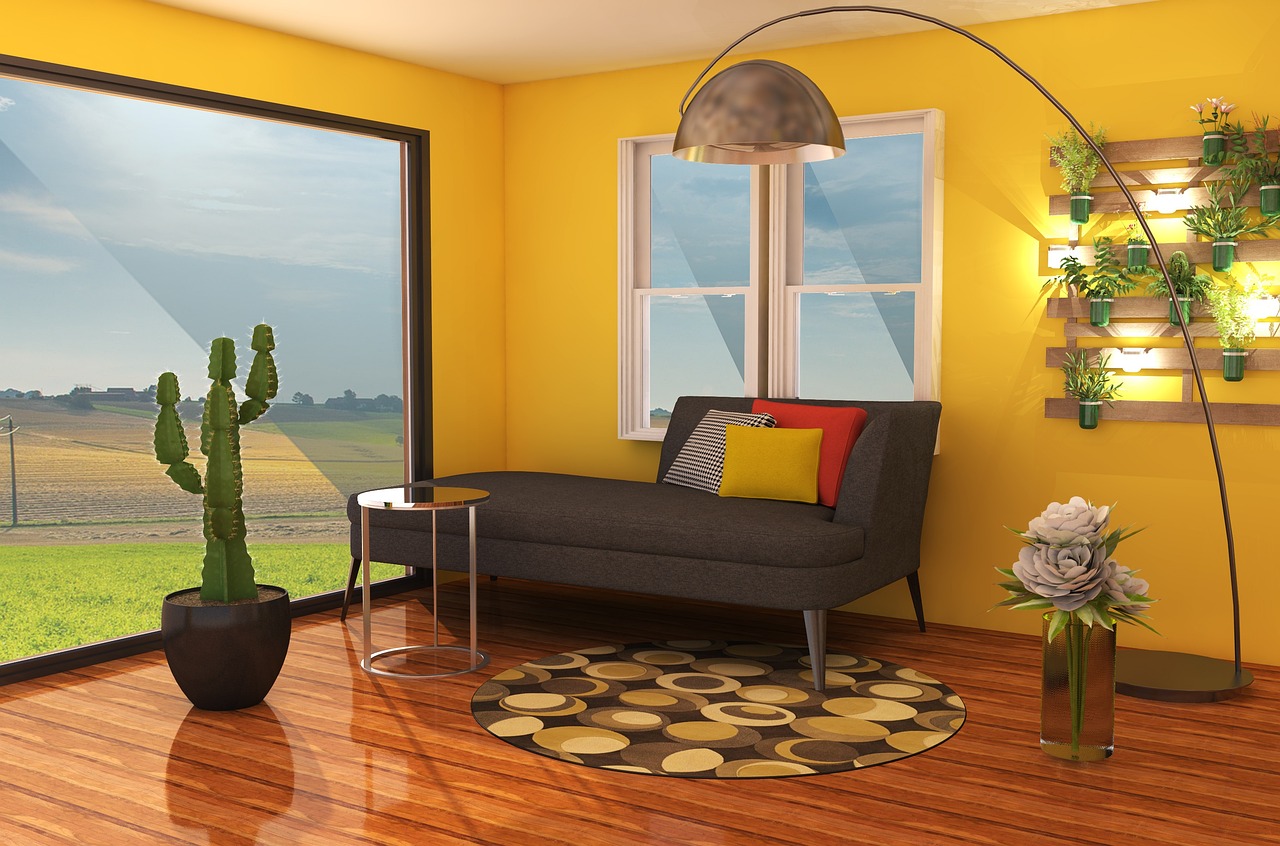
Reupholstering Techniques
When it comes to giving old chairs and sofas a fresh lease on life, reupholstering is a game-changer. Not only does it breathe new life into tired furniture, but it also allows you to express your personal style. Imagine transforming a worn-out piece into a stunning centerpiece for your living room! The first step in this creative journey is choosing the right fabric. Options range from luxurious velvets to durable canvas, each bringing its own flair and functionality. Think about how the fabric will hold up against daily wear and tear, especially if you have pets or kids running around.
Once you’ve selected your fabric, the next step is to understand the reupholstering process itself. It’s not just about slapping on new fabric; it involves a series of meticulous steps that can make or break your project. Here’s a quick rundown of the essential techniques:
- Removing the Old Upholstery: Start by carefully taking off the old fabric and padding. This is crucial for assessing the condition of the underlying structure. Use a staple remover or pliers to gently pull out staples and tacks.
- Repairing the Frame: Check for any broken or loose joints. A little wood glue or a few screws can go a long way in making your furniture sturdy again.
- Adding New Padding: Depending on the condition of the original padding, you may want to replace it. Foam and batting come in various thicknesses, so choose one that suits your comfort needs.
- Applying the New Fabric: Lay your new fabric over the frame, ensuring it’s centered and smooth. Start attaching it from the center outwards, pulling it taut to avoid wrinkles.
- Finishing Touches: Finally, trim any excess fabric and secure it with staples or tacks. Don’t forget to add any decorative elements, like piping or buttons, to elevate the overall look.
Reupholstering can seem daunting at first, but with a little patience and creativity, you can transform an outdated piece into a stunning work of art. It’s like giving your furniture a makeover, allowing it to shine once more. Plus, you’ll feel a sense of accomplishment knowing you’ve saved it from the landfill! So, grab your tools, choose your fabric, and let your imagination run wild.
Q: What tools do I need for reupholstering?
A: Basic tools include a staple gun, scissors, pliers, a hammer, and a measuring tape. Depending on your project, you might also need wood glue or screws for repairs.
Q: Can I reupholster any type of furniture?
A: Most upholstered furniture can be reupholstered, but it's best to avoid pieces with significant structural damage. Always assess the condition of the frame before starting.
Q: How do I choose the right fabric?
A: Consider the usage of the furniture, your style preferences, and the durability of the fabric. For high-traffic areas, choose a fabric that is stain-resistant and easy to clean.
Q: Is reupholstering expensive?
A: The cost can vary widely based on the fabric and the complexity of the project. However, reupholstering can be more cost-effective than buying new furniture, especially for high-quality pieces.

Upcycling Household Items
Have you ever looked at an old item in your home and thought, "This could be so much more?" Upcycling is the magical process of transforming everyday household items into something new and exciting, and it’s a fantastic way to breathe life into those forgotten treasures. Imagine turning an old ladder into a stylish bookshelf or repurposing glass jars into chic candle holders; the possibilities are endless! Not only does upcycling reduce waste, but it also allows you to express your creativity and add a personal touch to your living space.
One of the best things about upcycling is that it doesn’t require a degree in art or design. With just a bit of imagination and some basic tools, anyone can become an upcycling wizard. For instance, take a look at some common household items that can be easily transformed:
- Old T-Shirts: These can be turned into trendy tote bags or even quilts. Just cut, sew, and voila!
- Wine Bottles: Instead of tossing them, why not turn them into beautiful vases or decorative lights? A little paint and some fairy lights can do wonders!
- Wooden Crates: These can be transformed into rustic storage solutions or even stylish coffee tables with a bit of sanding and a coat of varnish.
Upcycling not only saves money but also adds a unique flair to your home decor. Each piece tells a story, reflecting your personality and style. It’s like having a gallery of your own creations, where every item has a history and a purpose. Plus, it’s a fantastic conversation starter when friends come over! You can proudly share how the old window frame hanging on your wall was once part of a dilapidated house, now transformed into a stunning piece of art.
Moreover, upcycling can be a fun activity for the whole family. Get the kids involved and let their imaginations run wild! You can organize a weekend project where everyone picks an item to upcycle. It’s a great way to bond, teach kids about sustainability, and foster creativity. Who knows? You might just discover a hidden talent in your little ones!
For those looking to take their upcycling skills to the next level, consider joining local workshops or online communities. These platforms offer inspiration, tips, and a chance to connect with fellow enthusiasts. Sharing ideas and techniques can open up a world of creativity, making your upcycling journey even more enjoyable.
In conclusion, upcycling household items is not just about saving the planet; it’s about embracing creativity and individuality. It’s about seeing potential where others see waste. So the next time you’re about to toss something out, take a moment to envision what it could become. With a little ingenuity and effort, you can transform the mundane into something extraordinary!
- What is upcycling? Upcycling is the process of creatively reusing discarded items to create something of higher value or quality.
- What materials can I upcycle? Almost anything! Common materials include glass, wood, fabric, and metal. Use your imagination!
- Do I need special tools for upcycling? Basic tools like scissors, glue, and paint can often suffice. More complex projects may require additional tools.
- Can upcycling save me money? Absolutely! Upcycling can reduce spending on home decor by transforming what you already have.

Inspiring Examples of Repurposed Art
When it comes to repurposed art, the creativity of artists and crafters knows no bounds. It's fascinating how a simple discarded item can be transformed into a stunning piece of art, capturing the imagination and telling a story. One of the most compelling aspects of repurposed art is its ability to breathe new life into forgotten materials, turning them into something that sparks joy and conversation.
For instance, consider the work of artists who take old bicycles and transform them into whimsical garden sculptures. These pieces not only serve as eye-catching decorations but also promote sustainability by giving new purpose to items that would otherwise end up in a landfill. Imagine a colorful bike frame adorned with vibrant flowers and greenery, creating a delightful focal point in any yard. It’s a perfect example of how art can be both functional and beautiful.
Another remarkable example is the use of reclaimed wood in creating stunning furniture and decor. Artists have taken old barn wood, pallets, and even driftwood to craft unique tables, chairs, and wall art. The beauty of these pieces lies in their imperfections, each scratch and knot telling a story of their past life. By choosing to repurpose wood, artists not only create stunning decor but also contribute to the preservation of forests by reducing the demand for new materials.
In addition, community projects have emerged around the concept of repurposing, where local artists collaborate to create large-scale installations. For example, a community might come together to create a mural using bottle caps, old tiles, and scrap metal. This not only beautifies the neighborhood but also fosters a sense of community and shared purpose. The resulting artwork serves as a testament to the creativity that can flourish when people unite for a common cause.
Personal stories of transformation also resonate deeply. Many individuals have shared how repurposing old items has changed their lives. For instance, a woman who turned her late grandmother's vintage jewelry into a stunning art piece found a way to keep her grandmother's memory alive while also creating something beautiful. This emotional connection to repurposed art is what makes it so special; it’s not just about the final product but the journey and stories behind it.
Ultimately, the world of repurposed art is filled with inspiration. Artists and crafters are continuously pushing the boundaries of creativity, proving that with a little imagination, anything can be transformed. Whether it's a piece of furniture, a garden sculpture, or a community mural, repurposed art encourages us to see the beauty in what might otherwise be discarded. As you explore this creative realm, consider what items in your life could be given a second chance to shine.
In a world where sustainability is becoming increasingly important, repurposed art serves as a powerful reminder of our ability to innovate and create from what we already have. So, why not embrace this movement and start your own journey of transformation? You might just uncover a hidden talent for turning the old into something extraordinary!

Community Projects
Community projects centered around repurposing are not just about transforming old items; they are about building connections and fostering a sense of belonging among neighbors. Imagine a group of people gathering on a sunny Saturday morning, armed with paintbrushes, tools, and a shared vision. Together, they breathe new life into neglected spaces, turning them into vibrant community hubs. These initiatives often start with a simple idea: to take what others may see as waste and transform it into something beautiful and functional.
One of the most exciting aspects of community repurposing projects is the diversity of ideas that emerge when people come together. For instance, a local park might be revitalized by creating benches from reclaimed wood, or a vacant lot could be transformed into a community garden using old pallets and discarded tires. The creativity is boundless, and the results can be truly inspiring. Not only do these projects beautify neighborhoods, but they also promote sustainable practices by reducing waste and encouraging resourcefulness.
Moreover, these projects often serve as a platform for skill-sharing and learning. Participants can teach each other various techniques, from painting and woodworking to gardening and landscaping. This exchange of knowledge not only enhances individual skills but also strengthens community bonds. When you work side by side with your neighbors, you're not just creating something new; you're building relationships that can last a lifetime.
To illustrate the impact of community-driven repurposing projects, consider the following examples:
- Community Murals: Local artists and residents can collaborate to paint murals on old walls, turning dull spaces into vibrant canvases that reflect the community's identity.
- Furniture Swaps: Organizing events where community members can bring unwanted furniture to swap encourages recycling and allows for fresh decor without spending a dime.
- Upcycled Playgrounds: Old tires and wooden pallets can be transformed into unique playground equipment, providing safe and fun spaces for children to play while promoting environmental awareness.
In essence, community projects focused on repurposing not only enhance the physical environment but also cultivate a spirit of collaboration and creativity. They remind us that together, we can transform not just materials, but also our communities and our lives. So, the next time you see an old item destined for the landfill, think about how it could become part of a larger community effort. What could your neighborhood create together?
Q: How can I start a community repurposing project?
A: Begin by gathering a group of interested neighbors and brainstorming ideas. Identify a common space that needs improvement and plan a day to work together. Providing tools and materials can help, but encourage participants to bring their own items to repurpose.
Q: What types of items are best for repurposing in community projects?
A: Almost anything can be repurposed! Look for furniture, wood pallets, tires, glass bottles, and even fabric. The key is to think creatively about how these items can be transformed into something new.
Q: Are there any costs involved in community repurposing projects?
A: While some projects may require funding for materials, many can be done with donated items or materials sourced from participants. Consider reaching out to local businesses for sponsorship or donations.
Q: How do community projects benefit the environment?
A: By repurposing items, these projects help reduce waste, lower the demand for new materials, and promote sustainable practices within the community. They also raise awareness about environmental issues and inspire others to adopt similar practices.

Personal Stories of Transformation
When we think about repurposing, it's easy to get lost in the idea of turning old furniture into something new and shiny. But what truly makes this practice special are the stories behind each transformation. Let’s dive into some personal narratives that highlight the emotional connections people have forged with their repurposed creations. These stories not only inspire creativity but also reveal how repurposing can be a powerful form of self-expression.
Take Sarah, for instance. She inherited her grandmother's old rocking chair, a piece that had seen better days. Instead of tossing it aside, she saw an opportunity to honor her family's history. With a bit of sandpaper, some fresh paint, and a vibrant fabric, she transformed that chair into a stunning centerpiece in her living room. Every time she sits in it, she feels a wave of nostalgia wash over her, reminding her of the stories her grandmother used to tell. This transformation was not just about aesthetics; it was about preserving a legacy.
Then there's Mark, a self-proclaimed DIY enthusiast who turned his garage into a mini workshop. One day, he stumbled upon a stack of old wooden pallets. Rather than letting them rot away, he decided to repurpose them into a rustic coffee table. The project took some time and effort, but the end result was worth it. Not only did he create a functional piece of furniture, but he also found a new passion in woodworking. Mark often shares his journey on social media, inspiring others to look at discarded items in a new light. His story exemplifies how repurposing can ignite creativity and even lead to new hobbies.
Moreover, community members have come together to share their repurposing experiences. In a local neighborhood group, people gather to swap stories and ideas. One resident, Lisa, shared how she transformed old glass jars into beautiful candle holders. This simple project not only beautified her home but also sparked a community-wide initiative to reduce waste. They began hosting monthly workshops where neighbors could bring their old items and learn how to repurpose them together. This sense of community not only fosters creativity but also strengthens bonds among residents.
These personal stories of transformation highlight a crucial aspect of repurposing: the emotional connections we build with our creations. Each item holds a story, a memory, or a lesson learned. By embracing the art of repurposing, we not only breathe new life into old objects but also create a narrative that enriches our lives. So, the next time you come across something that seems outdated or useless, ask yourself: what story could this item tell if given a second chance?
- What is repurposing? Repurposing is the process of transforming old or unused items into new, functional pieces, often with a creative twist.
- How can I start repurposing items at home? Begin by identifying items you no longer use. Research DIY projects online or join local workshops to learn techniques.
- Is repurposing environmentally friendly? Yes! Repurposing helps reduce waste, conserves resources, and promotes sustainable living.
- Can repurposing be a profitable venture? Absolutely! Many people sell their repurposed creations online or at local markets, turning a hobby into a side business.
Frequently Asked Questions
- What is repurposing and why is it important?
Repurposing is the creative process of transforming old or discarded items into new, functional pieces. It's important because it helps reduce waste, conserves resources, and promotes sustainability. By finding new uses for items that might otherwise end up in landfills, we can contribute to a healthier planet.
- How can I start repurposing items at home?
Starting to repurpose items at home is easier than you might think! Begin by looking around your space for items that you no longer use or that need a little TLC. Consider simple DIY projects like turning old jars into storage containers or using wooden pallets to create furniture. The key is to let your creativity flow and not be afraid to experiment!
- What are some popular techniques for furniture restoration?
Furniture restoration can be a fun and rewarding process! Popular techniques include sanding and refinishing wood surfaces, applying fresh paint or stain, and reupholstering with new fabric. Each method can dramatically change the look of your furniture while preserving its unique character.
- Can I repurpose items without any prior crafting experience?
Absolutely! Repurposing is all about creativity and resourcefulness, not necessarily skill. There are countless beginner-friendly projects available online that guide you step-by-step. Start with small tasks, and as you gain confidence, you can tackle more complex projects!
- What materials are best for upcycling household items?
When upcycling, the best materials are those that are readily available and versatile. Common household items like glass jars, wooden crates, old clothing, and even tin cans can be transformed into beautiful decor. The key is to think outside the box and see the potential in what you already have.
- Are there any community projects focused on repurposing?
Yes! Many communities have embraced repurposing through collaborative projects, such as community gardens, art installations, or workshops. These initiatives not only beautify neighborhoods but also bring people together, fostering creativity and sustainability. Check local community boards or social media groups to find out what's happening near you!
- How does repurposing affect the environment?
Repurposing has a positive impact on the environment by reducing the amount of waste sent to landfills and decreasing the demand for new materials. By giving new life to old items, we conserve resources and energy that would otherwise be used in the production of new goods, making it a sustainable choice.
- Can repurposing be considered an art form?
Absolutely! Many artists and crafters use repurposed materials to create stunning works of art. This form of artistic expression not only showcases creativity but also tells a story about the materials used, giving them a new purpose and meaning. It's a beautiful way to celebrate sustainability through art!







